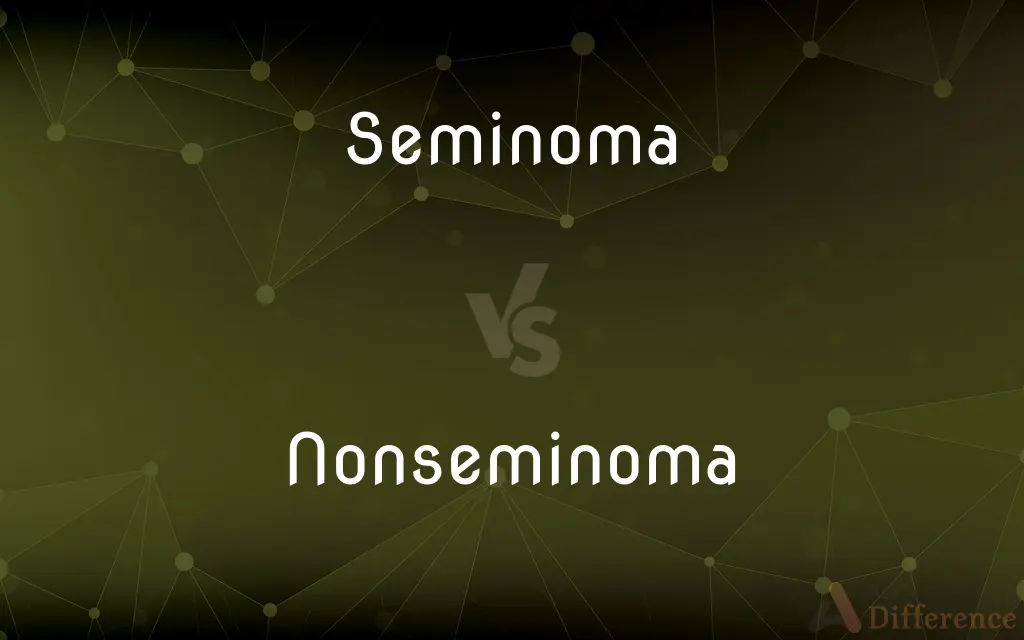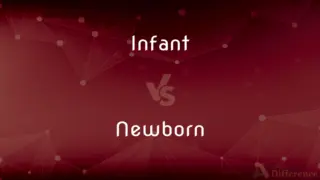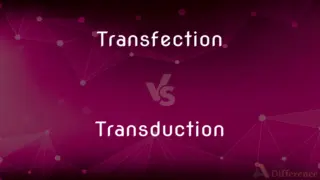Seminoma vs. Nonseminoma — What's the Difference?
By Maham Liaqat & Fiza Rafique — Updated on March 24, 2024
Seminoma is type of testicular cancer characterized by slow growth & good response to radiation therapy, typically found in men aged 30-40. Nonseminoma is aggressive, faster-growing testicular cancer affecting younger men, often requiring chemotherapy.

Difference Between Seminoma and Nonseminoma
Table of Contents
ADVERTISEMENT
Key Differences
Seminoma testicular cancer is known for its relatively slow progression, making it one of the more treatable forms of cancer when detected early. It tends to occur in men aged 30 to 40 and is highly responsive to radiation therapy, often leading to favorable outcomes. Nonseminoma testicular cancer, on the other hand, encompasses a group of more aggressive cancers including embryonal carcinoma, yolk sac tumors, choriocarcinoma, and teratoma. These types tend to grow and spread more quickly than seminomas and are usually found in younger men, typically in their late teens to early 30s.
The treatment approach for seminoma usually involves surgery followed by radiation therapy or, in some cases, surveillance. Due to its sensitivity to radiation, seminoma has high cure rates even when the disease is more advanced. Nonseminomas, while also treatable, often require a more aggressive treatment strategy that includes surgery followed by chemotherapy to address their faster rate of growth and higher likelihood of spreading.
Histologically, seminomas are relatively uniform, with cells that resemble primitive germ cells and have a clear appearance under a microscope. Nonseminomas are more varied in their appearance, reflecting the different types of cells they originate from, and often present a mix of different histological features within the same tumor.
Seminomas are generally less likely to produce markers such as alpha-fetoprotein (AFP), while nonseminomas may elevate levels of AFP, human chorionic gonadotropin (HCG), and lactate dehydrogenase (LDH), which can be used in diagnosis and monitoring response to treatment.
In terms of prognosis, seminomas typically have a very high cure rate, especially in early stages, due to their slow growth and responsiveness to treatment. Nonseminomas, although more aggressive, also have a high cure rate when detected early and treated promptly, but they may require more extensive treatment and closer monitoring to prevent recurrence.
ADVERTISEMENT
Comparison Chart
Age of Onset
Typically 30-40 years
Often late teens to early 30s
Growth Rate
Slow
Fast
Treatment Response
Highly responsive to radiation
Requires aggressive chemotherapy
Histology
Uniform, resembles primitive germ cells
Varied, can contain multiple cell types
Marker Production
Low likelihood of producing AFP
May produce AFP, HCG, and LDH
Prognosis
High cure rate, especially if caught early
High cure rate with aggressive treatment
Compare with Definitions
Seminoma
A type of testicular cancer with slow growth.
Despite his seminoma diagnosis, his prognosis is excellent due to early detection.
Nonseminoma
Affects younger men, often under 30.
At 25, he was diagnosed with a nonseminoma, consistent with the typical age range.
Seminoma
Highly responsive to radiation therapy.
After radiation therapy, the seminoma showed significant reduction.
Nonseminoma
A faster-growing type of testicular cancer.
His nonseminoma required immediate aggressive treatment.
Seminoma
Characterized by uniform cells.
The biopsy showed seminoma, with cells resembling primitive germ cells.
Nonseminoma
Contains multiple cell types.
The tumor was identified as nonseminoma, with a mix of embryonal and yolk sac cells.
Seminoma
Common in men aged 30-40.
He was diagnosed with seminoma, fitting the typical age range.
Nonseminoma
Can produce various tumor markers.
Elevated AFP levels suggested the presence of a nonseminoma.
Seminoma
A seminoma is a germ cell tumor of the testicle or, more rarely, the mediastinum or other extra-gonadal locations. It is a malignant neoplasm and is one of the most treatable and curable cancers, with a survival rate above 95% if discovered in early stages.Testicular seminoma originates in the germinal epithelium of the seminiferous tubules.
Nonseminoma
Requires chemotherapy post-surgery.
Following surgery, he started chemotherapy for his nonseminoma.
Seminoma
A malignant tumor of the testis arising from sperm-forming tissue.
Nonseminoma
A cancer that is not a seminoma.
Seminoma
(medicine) A form of testicular cancer
Seminoma
Malignant tumor of the testis; usually occurring in older men
Common Curiosities
What's the main difference between seminoma and nonseminoma?
Seminomas grow slowly and respond well to radiation, while nonseminomas grow faster and are treated with chemotherapy.
Can a testicular tumor have both seminoma and nonseminoma cells?
Yes, some tumors are mixed germ cell tumors, containing elements of both seminoma and nonseminoma.
Can both seminoma and nonseminoma be cured?
Yes, both types have high cure rates, especially when detected early and treated appropriately.
Why is chemotherapy preferred for nonseminoma?
Due to its rapid growth and tendency to spread, chemotherapy is more effective for treating nonseminoma.
Are there any specific age groups for seminoma and nonseminoma?
Seminoma commonly occurs in men aged 30-40, while nonseminoma affects younger men, often in their late teens to early 30s.
Do seminoma and nonseminoma require different follow-up care?
Yes, due to their differing natures, nonseminomas typically require more intensive follow-up to monitor for recurrence.
How does the presence of tumor markers affect treatment?
Elevated markers can indicate tumor type and extent, guiding treatment decisions and monitoring response.
What is the survival rate for testicular cancer?
Testicular cancer has one of the highest cure rates of all cancers, exceeding 95% for early-stage cancers.
How do treatments for seminoma and nonseminoma affect fertility?
Treatments, especially chemotherapy, can affect fertility, but options like sperm banking are available.
What are the treatment outcomes for seminoma and nonseminoma?
Both have excellent prognosis with early detection and proper treatment, though nonseminoma may require more aggressive therapy.
Can nonseminoma spread to other parts of the body?
Yes, nonseminoma can spread more quickly than seminoma, which is why aggressive treatment is necessary.
Is there a genetic risk factor for seminoma or nonseminoma?
Both can have genetic predispositions, but lifestyle factors and history of undescended testis are also significant risk factors.
Can lifestyle changes reduce the risk of testicular cancer?
While specific lifestyle changes can't guarantee prevention, maintaining overall health can help reduce risk.
Share Your Discovery

Previous Comparison
Infant vs. Newborn
Next Comparison
Transfection vs. TransductionAuthor Spotlight
Written by
Maham LiaqatCo-written by
Fiza RafiqueFiza Rafique is a skilled content writer at AskDifference.com, where she meticulously refines and enhances written pieces. Drawing from her vast editorial expertise, Fiza ensures clarity, accuracy, and precision in every article. Passionate about language, she continually seeks to elevate the quality of content for readers worldwide.
















































